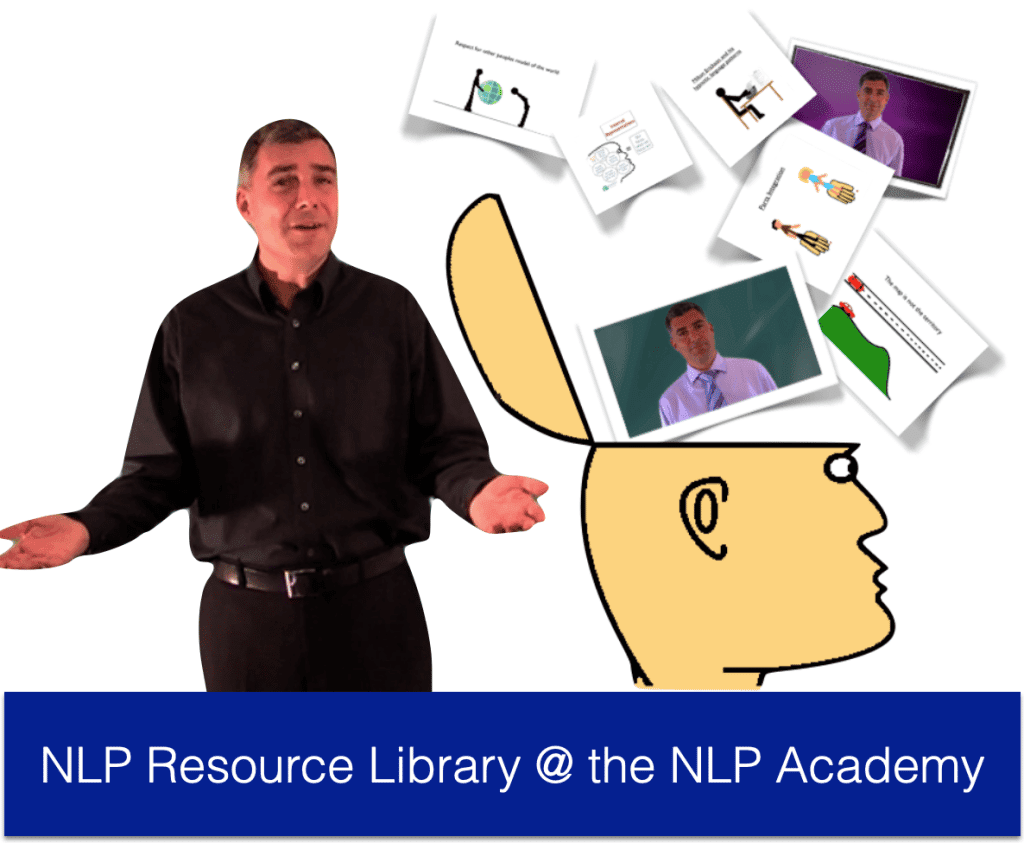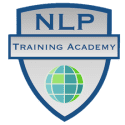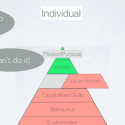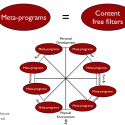Start & continue learning Neuro-Linguistic Programming here
Resources to support your study
- This is a Free NLP resources library at the Excellence Assured – NLP Training Academy

- NLP – Neuro-Linguistic Programming.
- Glossary of NLP terms, NLP Techniques and processes to compliment your professional NLP Training
- Videos, slides, examples, demonstrations – your free NLP resources
- Excellence Assured NLP Academy certifies NLP Practitioners, NLP Master Practitioners, NLP Trainers and NLP Master Trainers
Want to gain a professional qualification in the field of NLP? Enjoy our NLP resources with a purpose. Do your best in life, evolve and so fulfil your natural purpose.
NLP is really really useful and for some, learning NLP can seem like learning a new language. There are lots of different terms and phrases that are used and it can sound like gobbledygook if you are not familiar with them. We simplify the terms here so that understanding them can be easy for you.
Use these pages to gain an understanding of NLP, discover the different processes and techniques and try them out for yourself. You will find them fascinating and they will add value to you. Don’t forget that in order to realise the full potential of NLP, you would be best doing a full NLP certification course. In the meantime these resources will give you a good taster for what NLP is about.
Pick a topic below and dive right on in.
A-Z Index of NLP Resources
Accelerated Learning – Techniques of using all your senses in the learning process….
Agreement Frame – Gain agreement. Use “I agree and…”
Analogue (and digital) – On a continuum..on or off….
Analogue Marking – “I could … tell you.. how this works…” Language patterns….
Anchoring – Unconscious habit forming…
– Unconscious habit forming…
As If Frame – Act “as if” it were true. What would happen if you acted as if you were magnificent now?
Associated (and dissociated) – If you are dissociated then you are seeing yourself in your minds eye..
Auditory Digital – One of our four Representational Systems..
Auditory External Acuity – Learn to improve your listening skills.
Auditory Internal Awareness – How well do you recall sounds & people’s voices?
Auditory Tonal – Ability to hear sounds.
Backtrack Frame – For use in meetings/planning. Backtrack to reconfirm intention.
Bandler, Richard – Co-creator of NLP
Beliefs – Those things that you hold to be true.
Break State – A quick change in though pattern…
Breathing – How aware are you of your own breathing? How often do you pay attention to others breathing patterns?
Cause and Effect – Milton Model language pattern. It makes me wonder…
Chaining Anchors – Great technique to enable to you get what you want. State transformation.
Change Personal History – How do you store your memories? Are they useful to you?
Chunking – Language patterns, hierarchically speaking…
Circle of Excellence – Get in a powerful state of mind whenever you need it most!
Circuitry Clearing – From the P in NLP. Change your programming, change your results.
Communication Model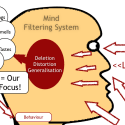 – Understand how you experience the world and create behaviour….
– Understand how you experience the world and create behaviour….
Compulsion Blow-out – NLP Master Practitioner technique that helps people overcome compulsions….
Confusion/Overwhelm – How do they occur? How to deal with them….
Congruency – Your integrity…
Collapse Anchor – You can change your habits using this technique…
Complex Equivalence – Milton Model pattern where two things are equated.
Conscious Mind (and Unconscious Mind) – All learning, behaviour and change takes place in the unconscious mind
Contrast Frame – How could you look at a perceived problem in a different way in order to make it positive for you?
Contrastive Analysis – NLP Pattern comparing two pictures from the minds eye to induce change…
Crossover matching – You shake your leg unconsciously, I tap my finger, we get in rapport…
]Deep Structure – What you are really thinking..?
Definitions of NLP – What on earth is this subject all about?!…..
Derivation (and transformation) – The words that we speak are derived from our thinking.
Designer Swish Pattern – DIY NLP pattern for changing poor though patterns…
Digital (and Analogue) – On/Off. 0 or 1. A continuum.
Disney Pattern – A great technique for generating creativity.
Dissociated (and Associated) – If you are associated then you are looking at something internally through your own eyes
Double Dissociation – Looking at an event from a position twice removed can give you a useful perspective…
Downtime (and Uptime) – Thinking time…
Ecology Check – An internal or external check to ensure that the result is desirable.
Ecology Frame – Frames are a way of thinking.
Evidence Frame – How will you know when you have it?
Eye Patterns Chart – Watch people’s eyes for incites into their thinking
Five Principles for Success – How to consistently create success…
Four Legs of NLP – Acuity, flexibility, outcomes and taking action – recipe for success
Four-Mat System – NLP Training system to incorporate all learning styles
Future Pace – Let’s see how you will act differently in the future now…
Genius – What is the make-up of genius?
Grinder, John – Co-Creator of NLP
Gustatory – Our sense of taste…
Hierarchy of Ideas – We think in logical ways you know….
Heuristic method/process – Encompassing all elements in the process…
Identity Level Change – Who are you?
Inductive/Deductive Training – Do we learn from top down or from bottom up?…
Internal Representations – Pictures in the minds eye, feelings, sounds that we experience internally…
]John Grinder – Co-creator of NLP alongside Richard Bandler
Kinesthetic External Acuity – Improve your sense of touch
Kinesthetic Internal Awareness and Construct – How are you feeling? How does it feel to touch jelly?
Law of Requisite Variety – The person with the most flexibility….
Lead Representational System – Think of your last holiday. What thought did you get…
Learning Ladder – Learning process in four stages.
Learning State – Hakalau – A Superb learning tool from Hawaii.
Logical Levels – Levels of thinking, for use in personal and business change.
Logical Levels of Learning – How deep is your knowledge of the learning process?
Logical Types – Sets and subsets, language and thinking systems.
Lost Performative – NLP Milton Model language pattern. Lost performer in a value judgement.
Magic number 7’ – Our brains are syncronised to the number seven….
Map is not the territory – Just because you think that it is true….
Mapping Across – An NLP Practitioner technique using the finer distinctions of picture from our minds eye…
Matching – “I can match your movements unconsciously in order to gain rapport..”
McClelland Model – Power, affiliation and achievement.
Meta – Standing back from a situation and being “a fly on the wall”….
Meta Mirror – Process for looking at things from different perspectives.
Meta Model – System for discovering the distortions, deletions and generalisations in people’s language.
Meta v Milton Model – When to use either model.
Meta Model 3 – Questioning model to stimulate reflection and change.
Metaphor – NLP Language Patterns that are about telling stories to influence thought.
Metaprogrammes – Unconscious programmes that we run internally and that form our personality.
Milton Model – A set of 19 Hypnotic Language Patterns.
Mind Read – Hypnotic Language Pattern. Part of the Milton Model.
Mirroring – Part of building Rapport. As if you are providing a mirror for someones actions.
Modal Operators – Milton Model pattern and the “rules of our life.”
Model of the world – Your beliefs, values, decisions form your MOTW.
Modelling – I can do what you do and learn to do it better than you.
My Friend John – Telling tales…
Nested Loops – Story 1 Part 1 .. Story 2 Part 1 … Story 3 Part 1 ….. Content …. Story 3 Part 2 …..
Neural Pathway – This is how habits are formed.
– This is how habits are formed.
Nominalisation – Milton Model Language Pattern. Communication is a process…
Olfactory Acuity – A great sense of smell.
Open Frame – Lets get the ideas flowing.
Overlapping – Exercise to aid sensory experience.
Overwhelm/Confusion – How we create overwhelm and confusion.
Pacing and Leading – If I pace and lead you, then the chance are that we will be in rapport..
Parts Integration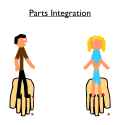 – There is a part of me that…..
– There is a part of me that…..
Pattern Interrupt – STOP running that thought pattern NOW!
Perceptual Positions – Great process to produce incite and learning from communication.
Personal Evolution Process – Taking you to the next level.
Phobia – …and how to overcome one.
Physiology – How you sit, how you stand, your facial expressions…
Precision Model – Devised by John Grinder – questioning technique.
Predicates – The words that we use that indicate how we are thinking…
Preferred Representational System – Your preferred means of processing communication
Presuppositions of NLP – A set of empowering and useful beliefs….
– A set of empowering and useful beliefs….
Presuppositions – Milton Model pattern
Presuppositions (Linguistic) – What am I saying that presupposes a truth?
Primary Representation System – Your favoured means for taking in and processing information.
Prime Concern – What is it that is really blocking someone from reaching their potential…?
Projection – I project my own thoughts on to you and attribute them to you…
Purpose Frame – “For what purpose?”
Quantum Linguistics – NLP Master Practitioner level linguistic patterns…
Rapport – A method that will enable you to consistently build an energetic affinity with other people…
Reference System – The sense that you use to reference your experience…
Referential Index – You, me…
Reframe – “How can I look at this another way” …
Re-imprinting – Recreate your Model of the World…
Representational Systems – The internal and external sensing systems that we use to “represent” our experiences to us… Free Quiz
Resource Anchor – Get in a powerful, resourceful state of mind.
Richard Bandler – One of the co-creators of NLP
Satir Categories – NLP Training Techniques from Virginia Satir…
Search Anchor – Going back in time in your mind to identify where habits formed..
Self Edit (Personal Edit) – Personal change
Semantic Prime – You know, those words that can have several different meanings…
Sensory Acuity – How good are your observation skills? What do your observations tell you….
Sensory Based Language – “I’m looking forward to learning this.”
Sequential Incongruity – Used to identify possible mismatches in values elicitations.
Simultaneous Incongruity – Used to identify possible mismatches in values elicitations.
Six Pillars of NLP – The foundations of NLP.
Six Step Reframe – Create a new way of looking a things.
Sleight of mouth – Language Patterns to allow you to overcome any objection….
Stacked Anchor – Create a powerful, positive state of mind.
State – How are you feeling..right NOW?…
Strategy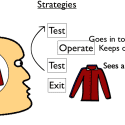 – Thoughts come in a sequence (strategy) and produce behaviours….
– Thoughts come in a sequence (strategy) and produce behaviours….
Submodalities – The finer distinctions to thoughts in our minds eye…
Surface Structure – The words that we use.
Swish Pattern – Fantastic technique to produce change…quickly…
Synesthesia – Two elements in a strategy that happen together…..
Systems intervention – Bring about change.
Task Decomposition (in modelling) – Let’s break it all down…
Temporal Submodalities – This is all about time…
Techniques of NLP – NLP provides us with a set of techniques that we can use to bring about change..
Time code – How do you store your memories?
Timeline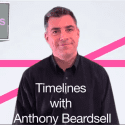 – We store memories in a linear form in our mind in order to make them more accessible….
– We store memories in a linear form in our mind in order to make them more accessible….
TOTE Model for strategies – Test Operate Test Exit….
Transderivational Search – “My oh my I (eye) can’t seem to find the answer….”
Transformation (and derivation) – Transform your thoughts into words, reverse the process.
Triple Description – Seeing your point of view, my point of view and a neutral point of view….
Universal Quantifier – Think, “all of the things.” Universal generalisations – Milton Model pattern
Values – Those things that are important to you….
Visual External Acuity – Improve your sight.
Visual internal awareness and flexibility – How well do you visualise?
Well Formedness Conditions for Strategies – How do we know that our strategy is well formed?….
What If Frame – Humour me, just think, what would it mean if the world was round?

